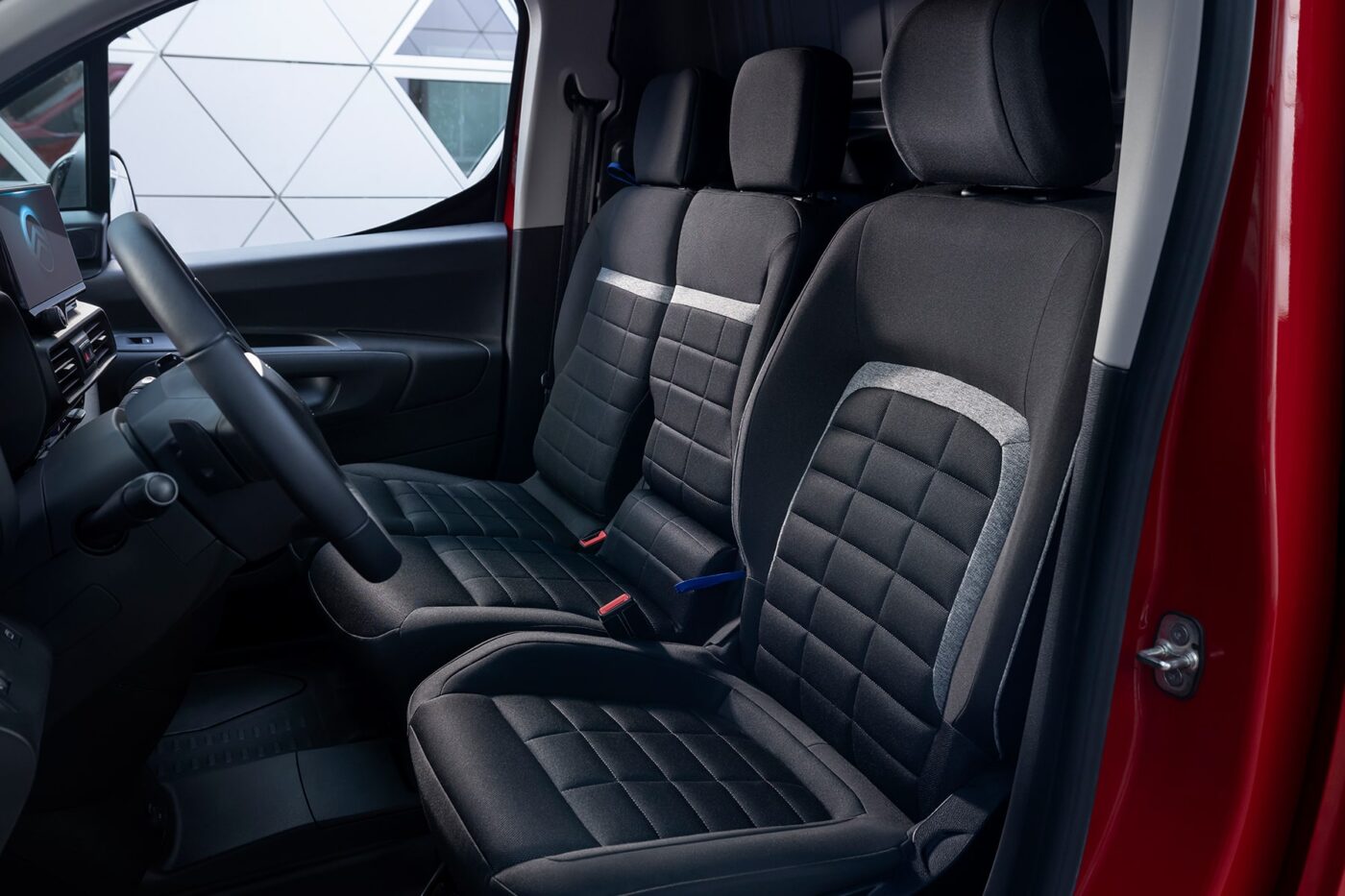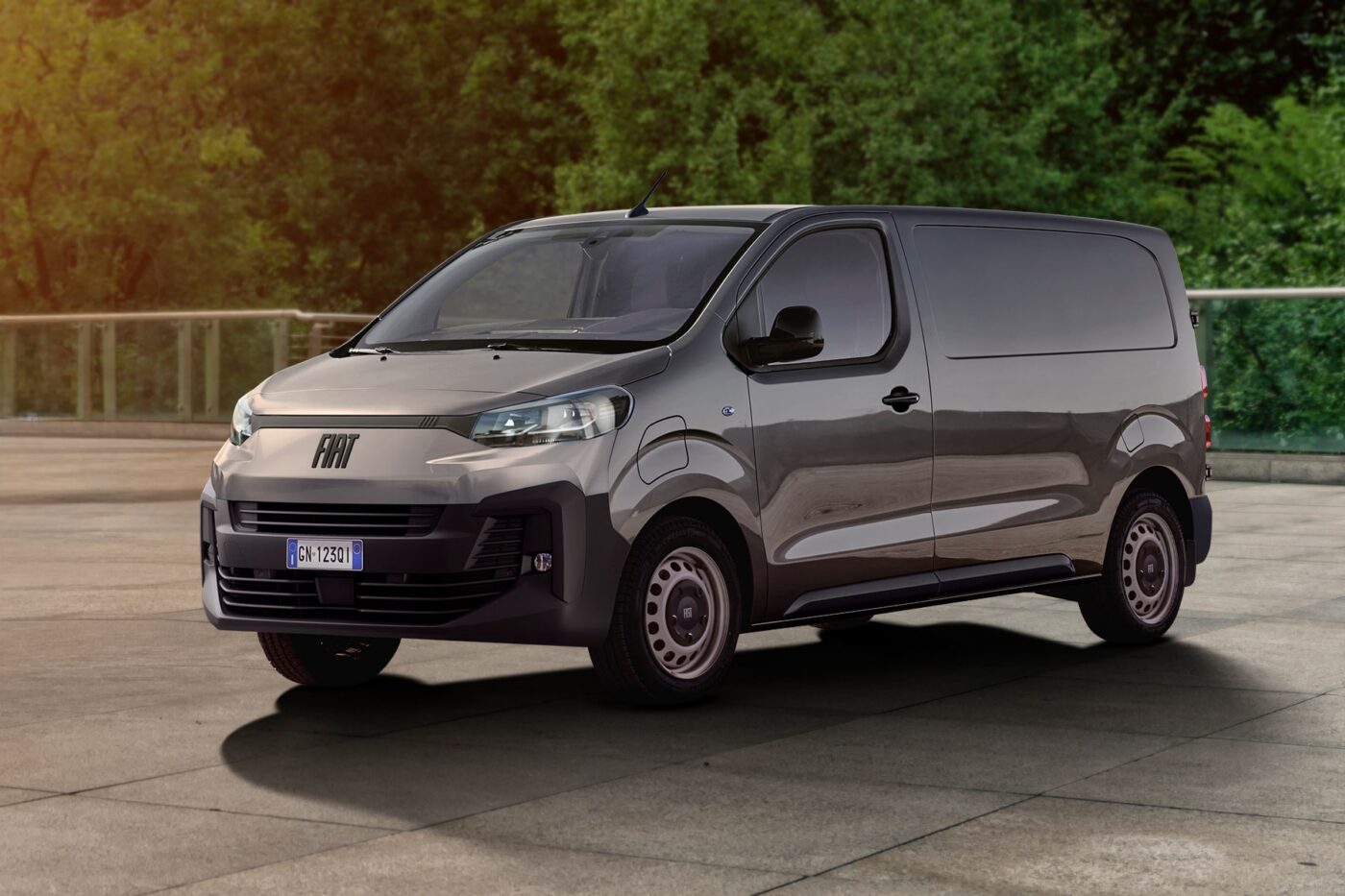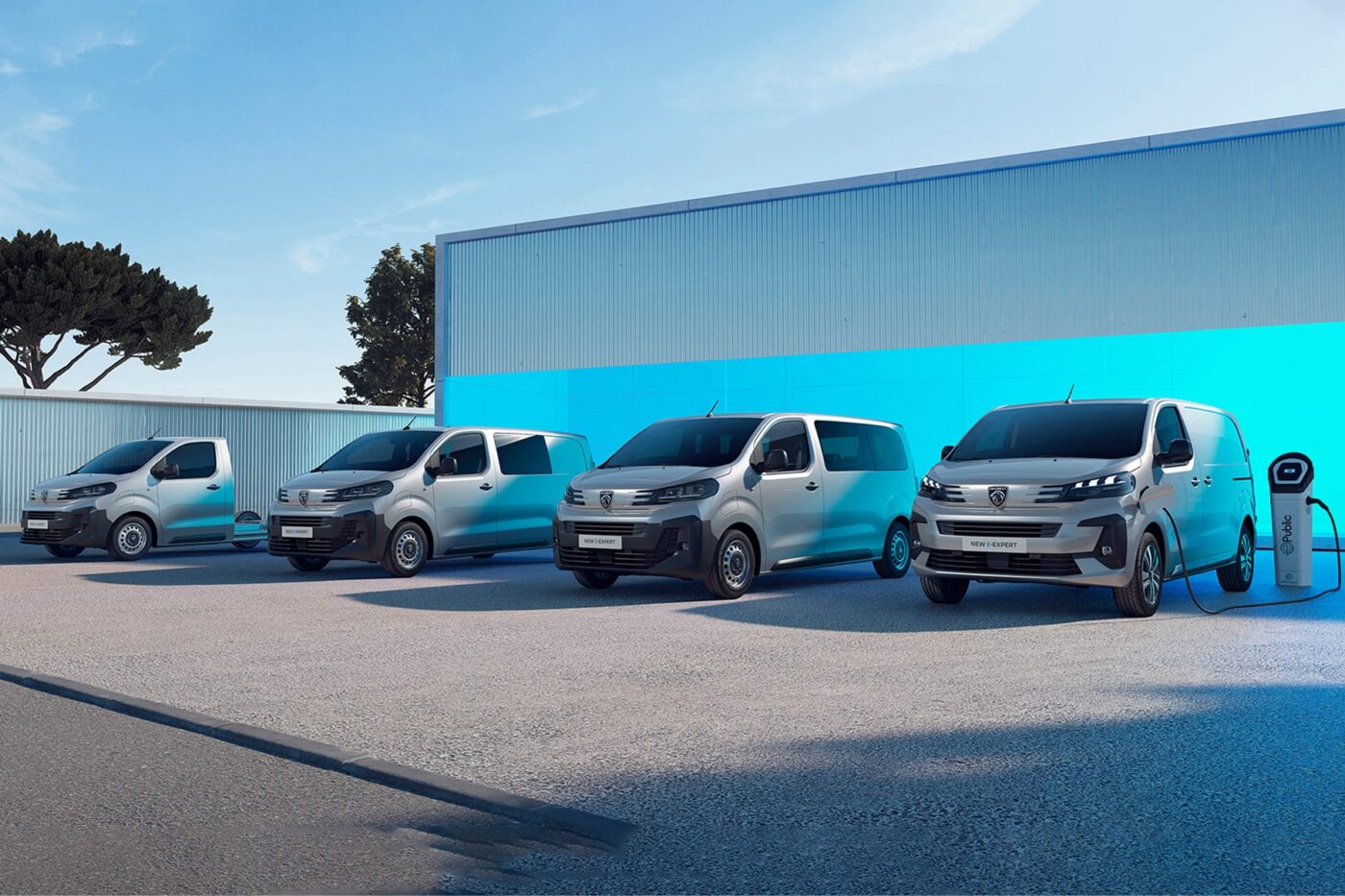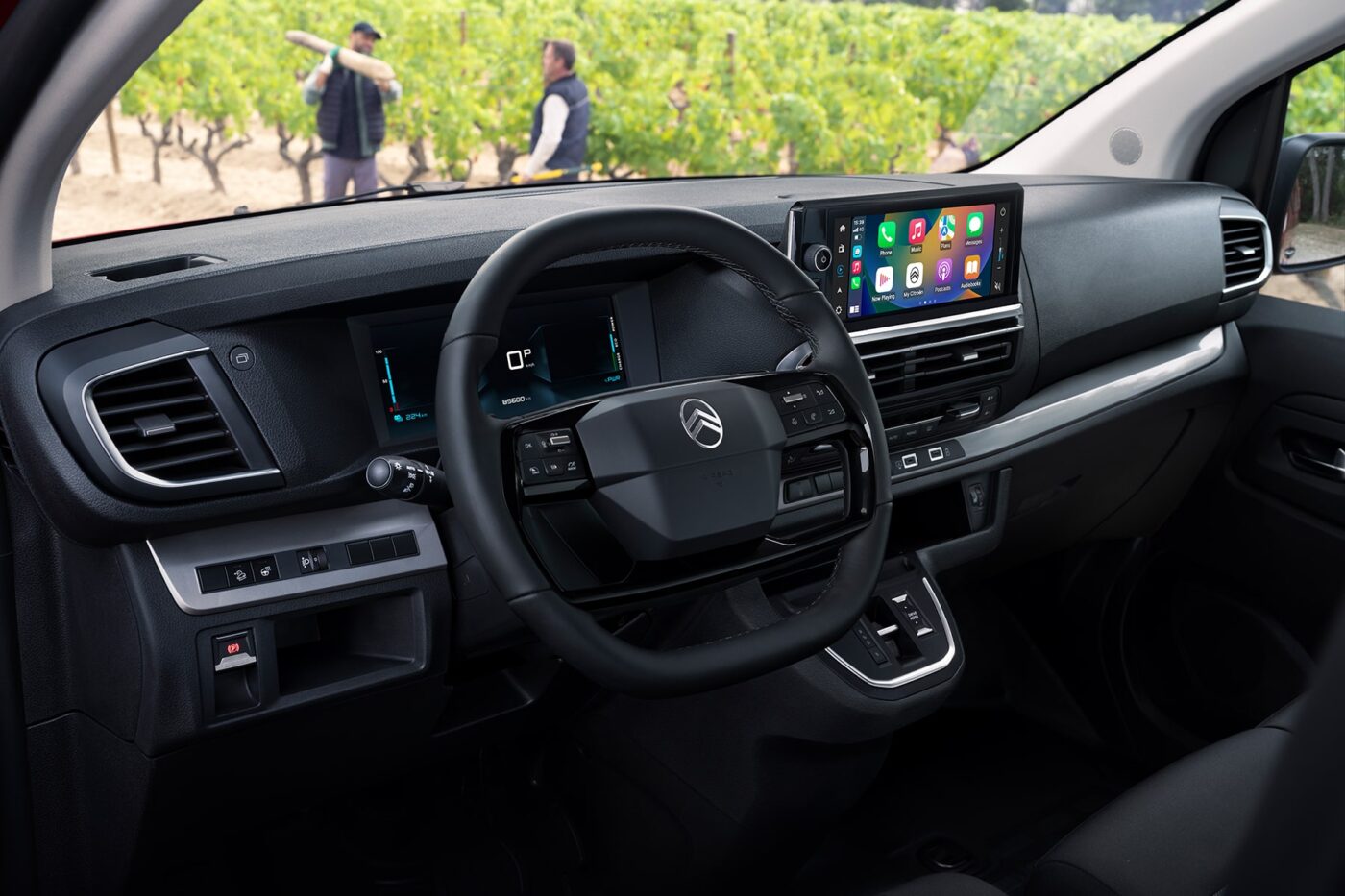Stellantis revamps all its electric vans
The ‘Stellantis Commercial Vehicles Ambition Day’ held in Morocco was primarily intended to demonstrate the scope of the light commercial vehicle model range – and the group’s leading role in electric vehicles in the sector. In the larger Europe region, Stellantis’ market share for electric LCVs is already over 40 per cent.
It is the first time that a manufacturer is repositioning its entire van portfolio in one move, said Xavier Peugeot, Senior Vice President of Stellantis’ Commercial Vehicles Business Unit, during the presentation. “We’re not just bringing one new model, but three new model families – compact, midsize and large vans.” The second generation of electric powertrains will arrive in late 2023 and should not require any compromises in terms of payload or cargo space compared to vans with internal combustion engines.
New electric panel vans
Even though Stellantis speaks of a new edition, in essence, all of them are revised versions of existing models. The compact vans are the quartet Opel/Vauxhall Combo, Citroën Berlingo, Peugeot Partner and Fiat Doblo.
These vehicles now have a heat pump as standard, which should make the vehicles more efficient. At the presentation, Luca Marengo, Global Head of Product, mentioned a range of up to 330 kilometres for the new compact vans – 50 kilometres more than before. That is considerable and is not solely due to the addition of a heat pump. But Stellantis did not explain how this extra range is achieved – neither during the event nor in the press release.
There was also no consistent answer from the four brands in their own press statements. While Opel does not want to give details on the models until opening the order books in the coming weeks, Citroën has more information. The ë-Berlingo still has an output of 100 kW, but there is talk of a maximum torque of 270 Nm – ten Newton metres more than before. However, whether this is a further development of the well-known engine from Vitesco Technologies or the 100 kW version of the in-house development known from the passenger car models with 115 kW is not specified.





There is talk of a “new” 50 kWh battery for power storage. The 50 kWh was previously a gross figure for compact vans, and the usable net energy content was around 45 kWh. Stellantis now installs a battery with 54 kWh gross and 50 kWh net in the passenger car models. It has not been confirmed whether this battery will also be used in the ë-Berlingo and its sister models – nor if that is the “new 50 kWh battery.” However, the switch to a 54-kWh battery would explain the additional range.
The compact vans all have the same drive and are supposed to differ mainly in terms of special features. Opel, for example, offers matrix LED headlights for the best visibility, Peugeot offers its i-Cockpit (where you do not look through the steering wheel rim but over the lower-positioned steering wheel at the instruments), Fiat with its “Magic Cargo” offers the highest flexibility in the cargo space, and Citroën will entice customers with special comfort seats. Citroën and Peugeot also have the new brand logo at the front, while Opel’s design is based on the brand’s passenger car models with the “Opel Vizor.” The range includes four body versions, two lengths and versions with a payload of up to 780 kilograms.
Five-metre vans keep their electric drive
One class above, there are also four new models with familiar names: the Opel/Vauxhall Vivaro, Citroën Jumpy, Fiat Scudo and Peugeot Expert. The design has been refreshed all around, and inside, there is now a new cockpit with a ten-inch driver’s display and more storage than before.
There is no change in the drive system, and the motor still has an output of 100 kW. The battery’s energy content remains at 50 or 75 kWh, both gross values. The range thus”only” increases by 20 kilometres to 350 kilometres due to various efficiency measures. Alternatively, there is also the fuel cell electric drive, which is supposed to offer a range of up to 400 kilometres with three hydrogen tanks and a battery – which, according to Stellantis, can be refuelled in only five minutes.
There are six body types in this class, and in the future, only two lengths instead of three (the 4.60-metre-long S model has been scrapped), offering up to 1.4 tonnes of payload or 6.6 cubic metres of cargo volume.







Large vans offer a range of up to 420 kilometres
The second generation of electric drives for the large van segment has probably made the biggest leap. That concerns the Fiat Ducato, Opel Movano, Citroën Jumper and Peugeot Boxer. Stellantis will also introduce the US version of the Ram Pro Master BEV later this year.
In the future, the range of the large electric vans will be up to 420 kilometres, according to WTLP – previously, they had a maximum range of 280 kilometres on paper. That is made possible by a 110 kWh battery – by the way, the 37 and 70 kWh versions have been cancelled without replacement. The battery can be charged with up to 150 kW, so fast charging from zero to 80 per cent should take “less than one hour.” A 200 kW motor replaces the previous 90 kW electric motor with 400 Nm torque.
And: From mid-2024, the large vans will also receive an adapted version of the hydrogen drive, which will then offer a range of up to 500 kilometres – and shorter refuelling times than the charging times of the battery-electric models.






As before, the large vans will be offered in four lengths and three heights, providing up to 1.5 tonnes of payload or 17 cubic metres of cargo space. The portfolio comprises seven body versions, including a special delivery version for delivery services in future. That will have, among other things, a roller shutter door instead of the rear door.
400-volt PTO for electrical consumers
All models across the three product families will have at least 18 assistance systems ex works, improved connectivity functions (for example, the delivery route will be adapted to the current traffic situation) and, in the case of the electric models, an ePTO will also be available. This electric “Power Take Off” is intended to enable the operation of other electrical consumers with power from the drive battery – for example, electric tools for use by tradesmen (or the recharging of batteries for the tools) via sockets, or even a refrigerated body is to be supplied with energy in this way – not only with 230, but also with 400 volts.




The focus was on Europe at the event, but the RAM Pro Master BEV for the US market was also mentioned. The Ram 1500 Rev pickup, which has already been unveiled, is scheduled to launch in late 2024. The Ram brand will then introduce four electric pickup models within two years to serve all customer needs with an electric powertrain.
“The essence of our customer-centric renewal of our entire van lineup is no compromise – in range, capability, safety and connectivity,” Marengo said.
Stellantis has left out one important point for all models: price. With all the drive and connectivity options, the vehicle may fit well into operational processes – but it also has to be competitive in terms of acquisition or overall costs.
Update 18 March 2024
Vauxhall has announced full pricing and specifications for its new light commercial vehicle (LCV) range, including the BEV models Combo Electric, Vivaro Electric, and Movano Electric.
The Combo Electric can hit a range of 205 miles on its new 50kWh battery (WLTP combined cycle), marking an improvement of 30 miles further than its predecessor. The drive system can deliver 270Nm of torque, the vehicle comes with a 7.4kW on-board charger as standard (an 11kW charger is optional), and the battery can be recharged from 0-80% in 30 minutes at a 100kW public charging station. Prices here start at £26,800 OTR, after the Plug-in Van Grant, excluding VAT.
The Vivaro Electric can reach 217 miles on a 75kWh battery, which can be charged using the standard 7.4kW onboard charger (again, an 11kW charger is optional), and a 5-80% charge takes just 45 minutes at a 100kW public charger. The Vivaro Electric starts at £37,805.
The Movano Electric has a 110kWh battery, which can cover up to 261 miles per charge. It has a three-phase 11kW onboard charger as standard equipment and is the first Vauxhall capable of charging at 150kW on a DC fast charger, allowing for a 0-80% charge in 55 minutes.
stellantis.com (press release), stellantis.com (Citroën), stellantis.com (Opel), stellantis.com (Peugeot), stellantis.com (Fiat Professional), stellantis.com (update)




0 Comments